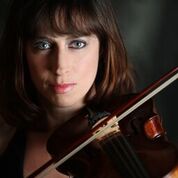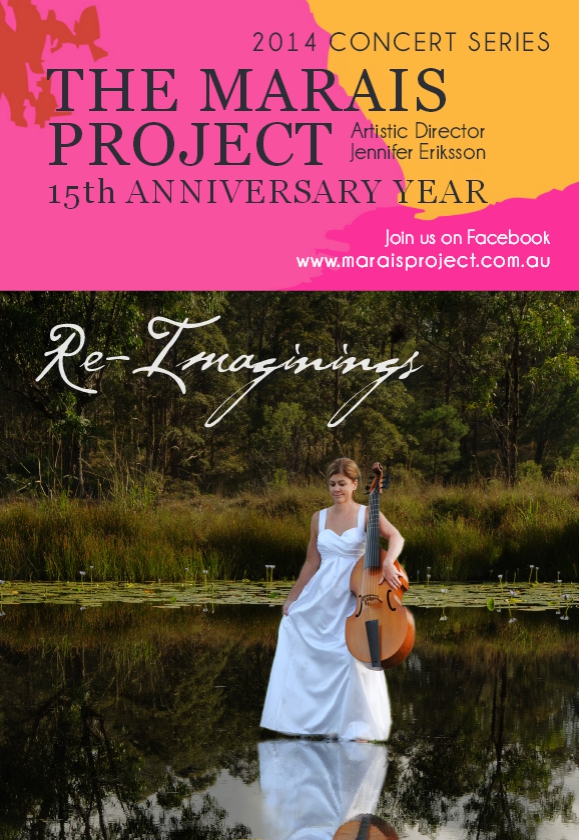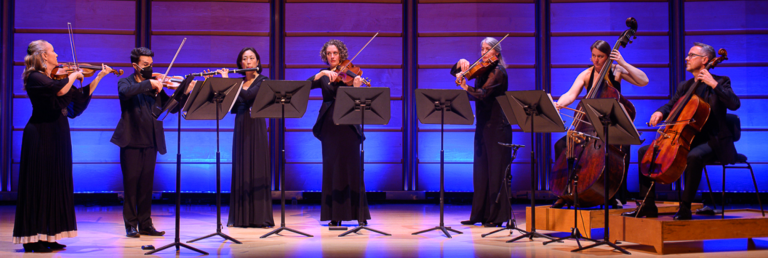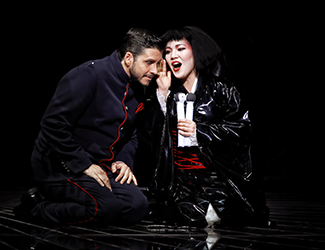Concert Review: Ascension/ Bach Akademie Australia

Ascension, Bach Akademie Australia
St Francis of Assissi Church, Paddington, Sydney
29 March, 2019
Despite the innumerable words written about the music of J S Bach, there is nothing that touches the soul quite like hearing it performed by those who understand it best. JS Bach’s music brims with inexplicable harmonies and poignant melodies against brassy jubilation; Lutheran simplicity contrasts with Baroque grandeur and intellectual complexity. At the Bach Akademie Australia’s Ascension, divisions receded as we heard the music of a Lutheran composer, in a Catholic church, dedicated to the victims of the Christchurch mosque massacre.
The twenty-one instrumentalists and thirteen-strong choir from whose ranks the soloists – soprano Amy Moore, counter-tenor Tobias Cole, tenor Richard Butler and bass David Greco – were drawn, came from the elite of Australia’s Baroque musicians.
Directed from the violin by founder Madeleine Easton and performing on period instruments, the orchestra and choir, for whom it was a debut performance, presented three rarely heard seasonal cantatas by JS Bach, Weinen, Klagen, Sorgen, Zagen, BWV 12, O Ewigkeit, du Donnerwort, BWV 20 and the Ascension Oratorio BWV 11.
It was a sombre opening to the concert. Weinen, Klagen, Sorgen, Zagen (Weeping, lamentation, worry, despair) opens with a Sinfonia, featuring the oboe, exquisitely played by Emma Black. The following chorus is a testament to the burden of sorrow and despondency, fully realised by the ostinato, Easton’s tempo, phrasing, dynamics and articulation, which also allowed for contrast in the more affirmative arias that followed. If it sounded familiar, the elements of this chorus were used by Bach, the master of parody, in the Crucifixus of the Mass in B minor.
The choir sang with a gloriously pure and well-proportioned sound, adept at balancing the long melismatic lines of Bach’s writing, his ornamentation, phrasing and laser-sharp chromaticism in the very sympathetic acoustic.
We were treated to more masterful oboe playing in the counter-tenor aria Kreuz unde Kroner sind verbunden, the first of three consecutive arias, luxuriously performed by Tobias Cole, David Greco and Richard Butler, with continuo strings and trumpet adding a discreet yet supportive foil, the trumpet deftly weaving the tune of Jesu meine Freude into the tenor aria Sei getreu, alle Pein.
Bach’s BWV 20, O Ewigkeit, du Donnerwort, (O Eternity; the sound of thunder) was intended for the first Sunday after Trinity and like BWV 12, also dispenses with a soprano soloist. Its eleven movements are intended to be separated by the sermon – seven before and four afterwards.
The orchestra took centre stage for the opening bars, playing in the manner of a stately French overture with crisp dotted rhythms, preceding the choir’s insistent words of trepidation. The ensemble transitioned seamlessly to the more brisk fugal section before returning to the recapitulation.
Tenor Richard Butler excelled in the fiery word-painting of the demanding aria Ewigkeit, de machst mir bange; David Greco’s declamatory recitative Gesetzt, es dau’rte Verdammten Qual truly invoked fire, brimstone and eternal damnation, while Tobias Cole’s beautifully nuanced highlight was the aria Ach bleibe doch, meine liebstes Leben from BWV 11 (also used in as an alto aria in the Mass in B minor).
Also in eleven movements separated by the sermon, Bach’s Ascension Oratorio was composed in 1735, the year after the Christmas Oratorio. There are marked similarities in style and orchestration. I first heard the Ascension Oratorio at the BBC Proms, in a scholarly performance by Sir John Eliot Gardiner and his ensemble. A nice connection, given that Madeleine Easton has worked with Sir John and he is patron of the Bach Akademie Australia.
The ensemble’s exultant introduction was thrilling and like the opening bars of the Christmas Oratorio, instantly uplifting. I defy listeners not to smile when they hear the festive flutes, oboes, trumpets and timpani of this sunny D major chorus! The ensemble replaced the image of severity with one of triumph, expressed in infectious dance rhythms.
David Greco’s recitativo accompagnato Ach, Jesu, ist dein Abschied was beautifully complemented by the transverse flutes; the violins coming to the fore in the following alto aria. Richard Butler as tenor soloist portrayed the Evangelist narrating the tale with factual simplicity.
It was a long wait to hear soprano soloist Amy Moore in the penultimate movement of the piece, the aria, Jesu, deine Gnadenblicke which is sans basso continuo, but with two unison flutes, oboe and unison strings creating a beautifully lucent texture, which Amy Moore’s delicate and supple rendition reflected.
The closing chorale was a tour de force, the instruments rocking the syncopation as the sopranos take up the cantus firmus, culminating in a triumphant finale.
This was an evening of inspiration and revelation. Madeleine Easton’s delicate but firm and scholarly leadership brought to the stage, a superlative performance of matchless repertoire.
Shamistha de Soysa for SoundsLikeSydney©
,







